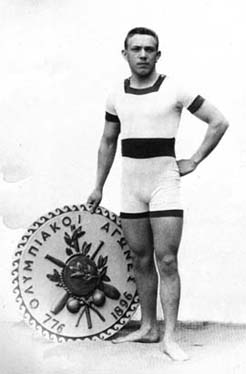
The Olympics used to include art competitions. Between 1912 and 1952, medals were awarded in architecture, literature, music, painting, and sculpture; even the Soviets contributed art to the 1924 Paris games, though they disdained the sporting events as “bourgeois.” An exhibition at the 1932 games drew 384,000 visitors to the Los Angeles Museum of History, Science and Art.
All works had to be inspired by sports; those ranked highest received gold, silver, and bronze medals. The categories included epic literature, chamber music, watercolors, and statuary; the 1928 games even included a competition in town planning.
In two cases champion athletes also won art competitions. Hungarian swimmer Alfréd Hajós, left, who had won two gold medals in Athens in 1896, took home a silver medal for designing a stadium in 1924. And American Walter Winans won gold both as a marksman in 1908 and as a sculptor in 1912.
In 1954 the art competitions were dropped because most of the participants were professionals, which was held to conflict with the ideals of the games. But the Olympic charter still requires hosts to include a cultural program “to promote harmonious relations, mutual understanding and friendship among the participants and others attending the Olympic Games.”
